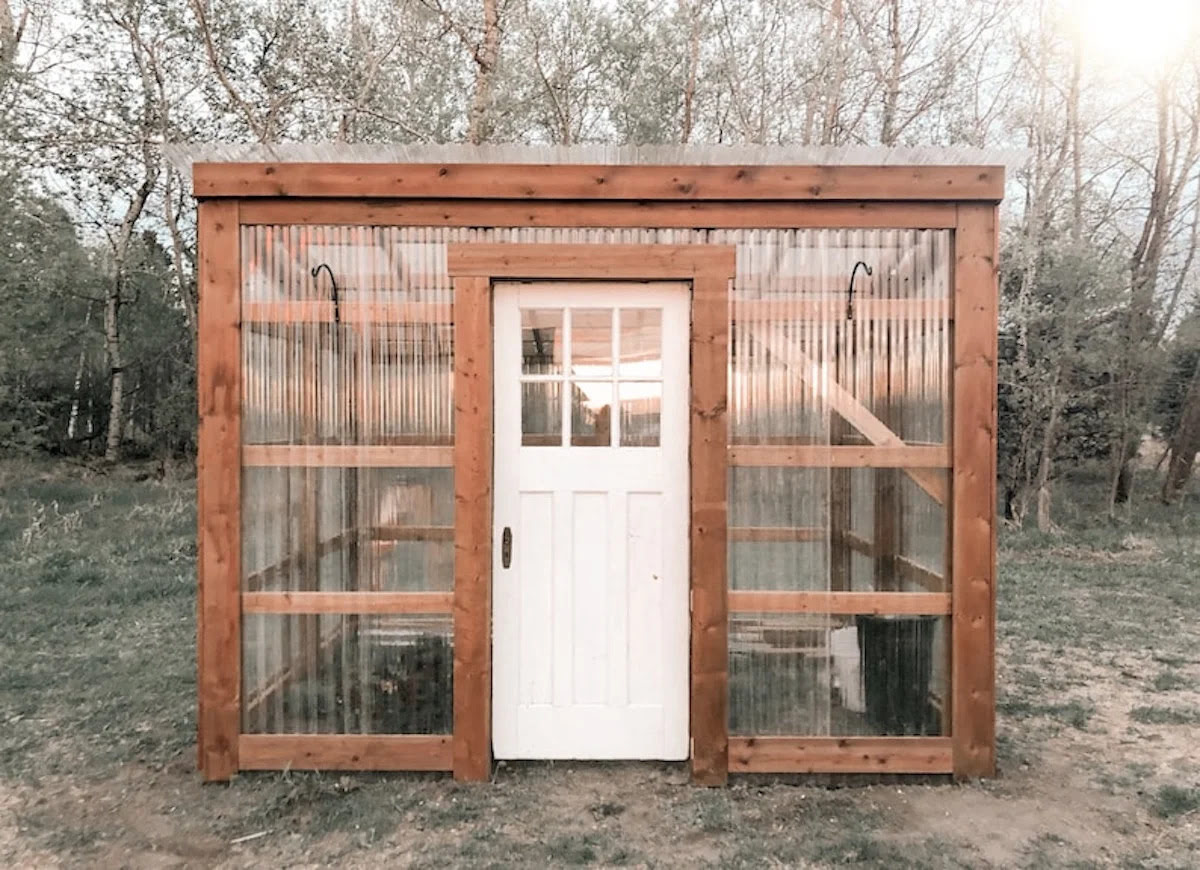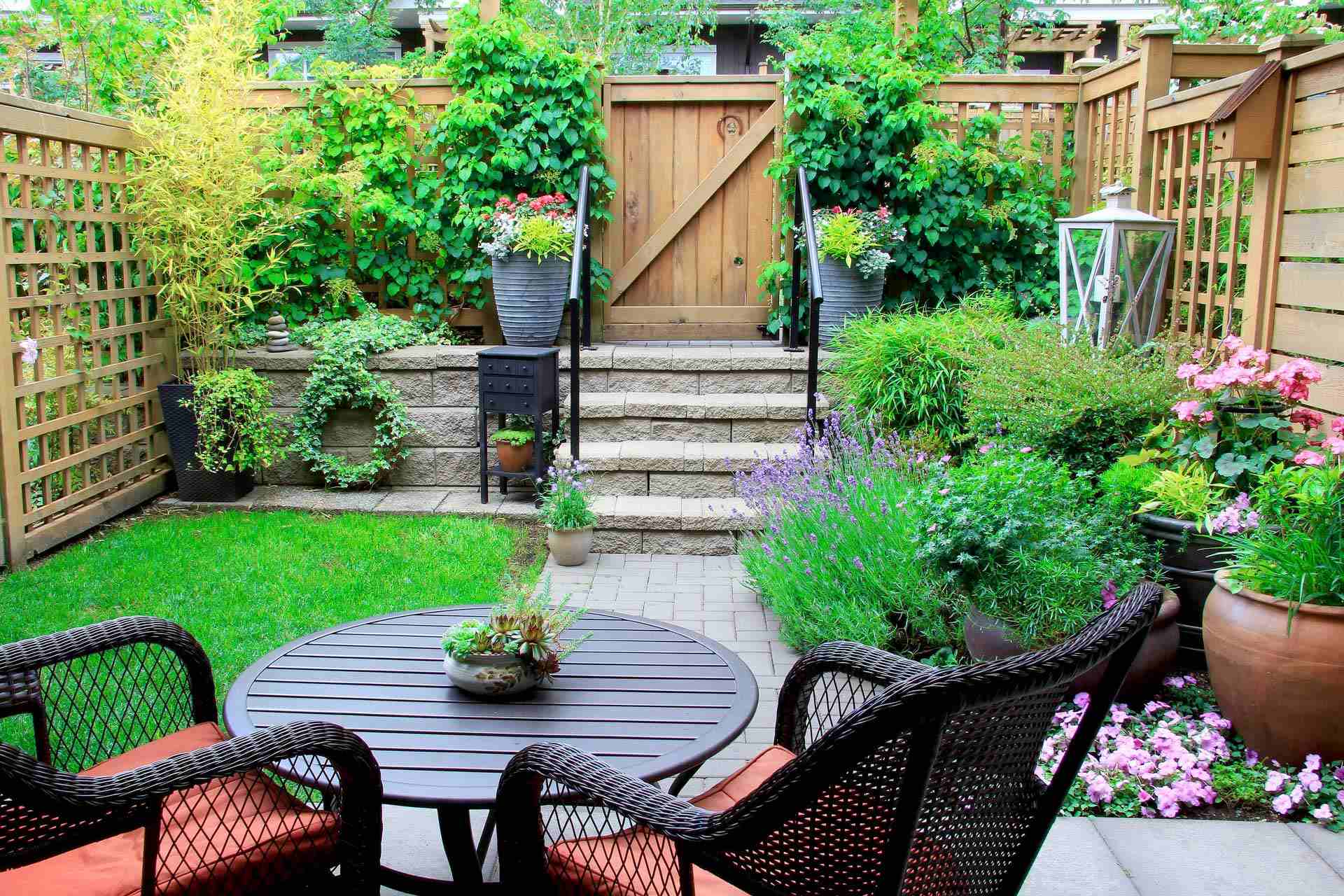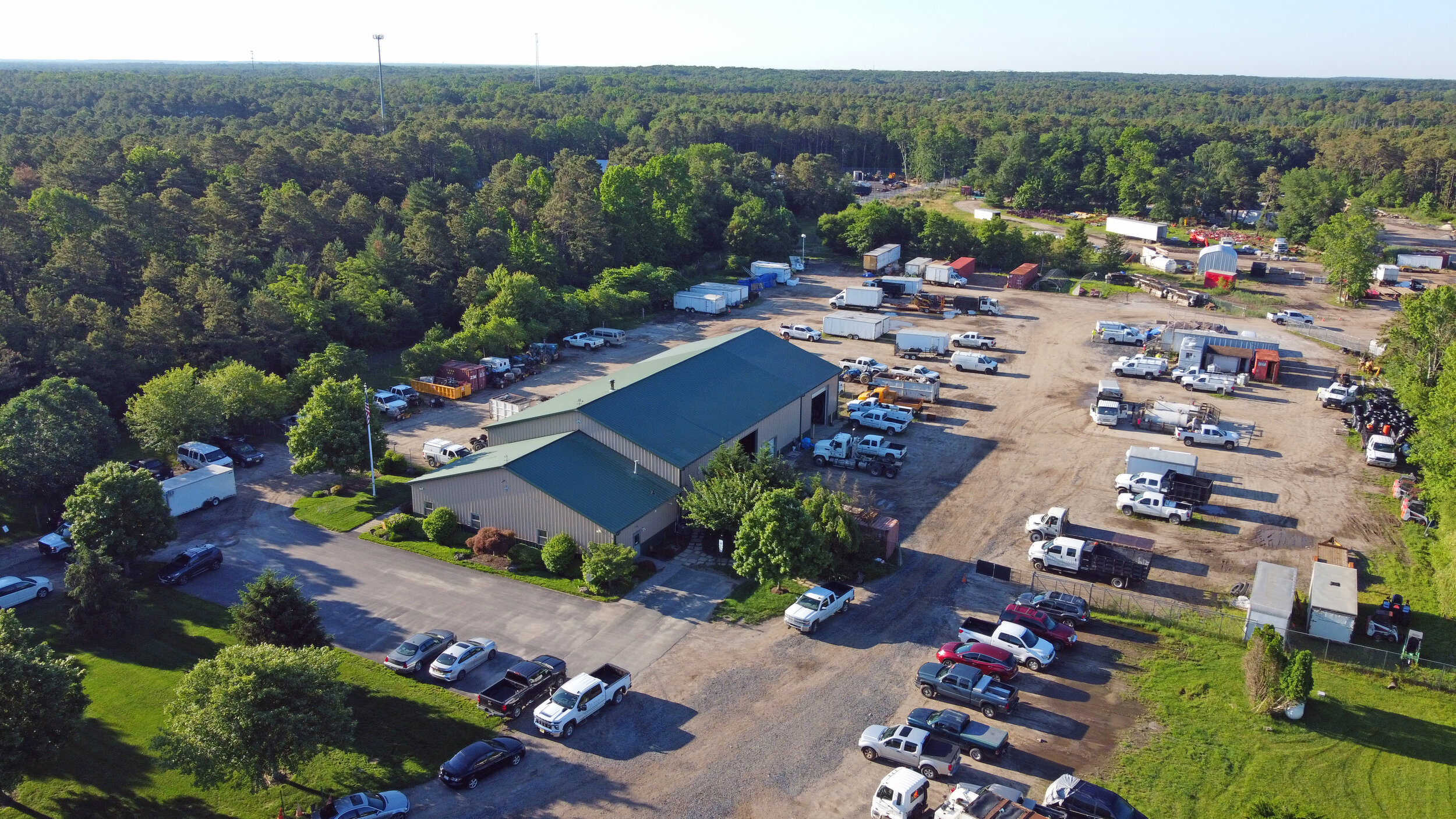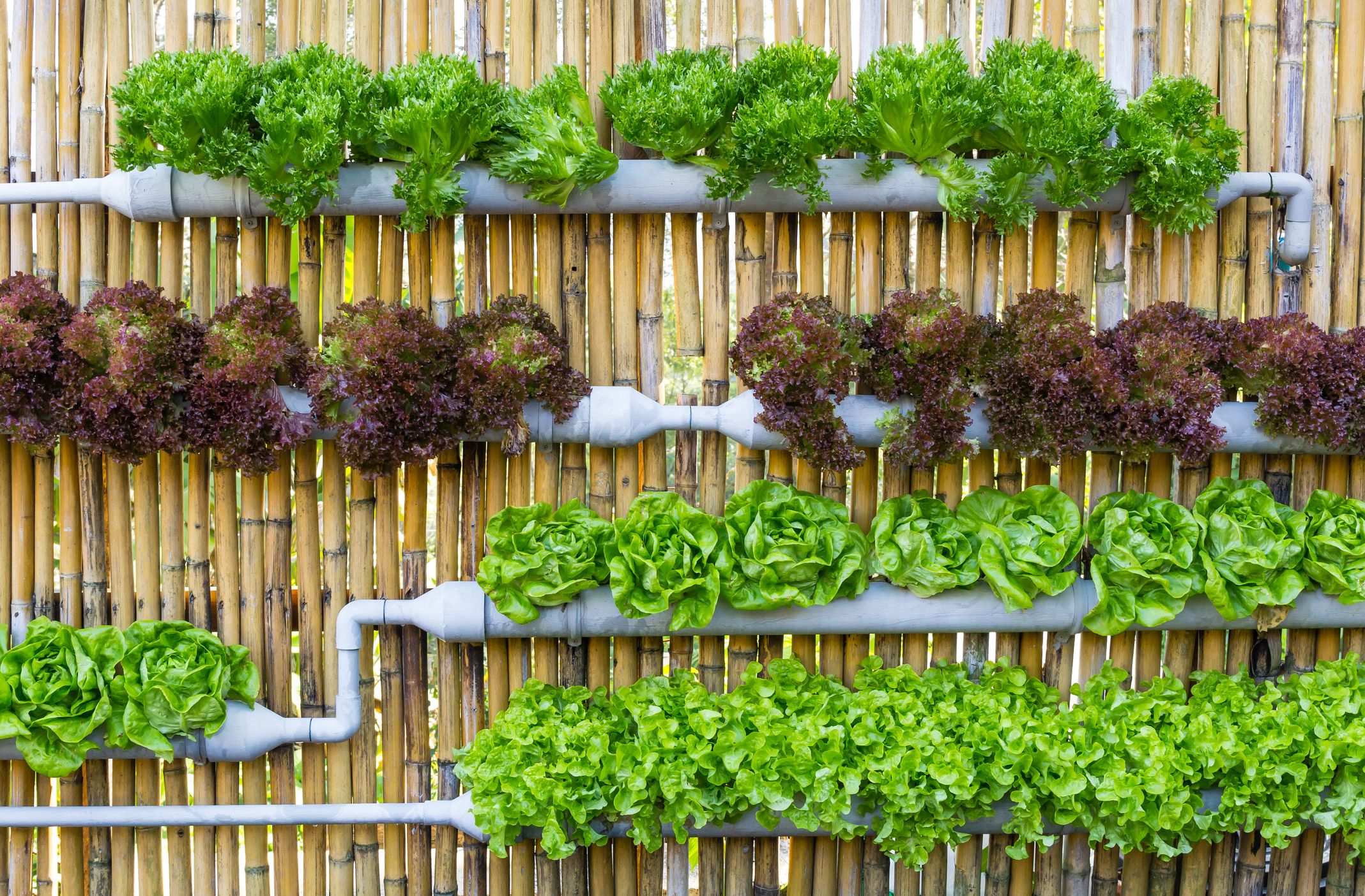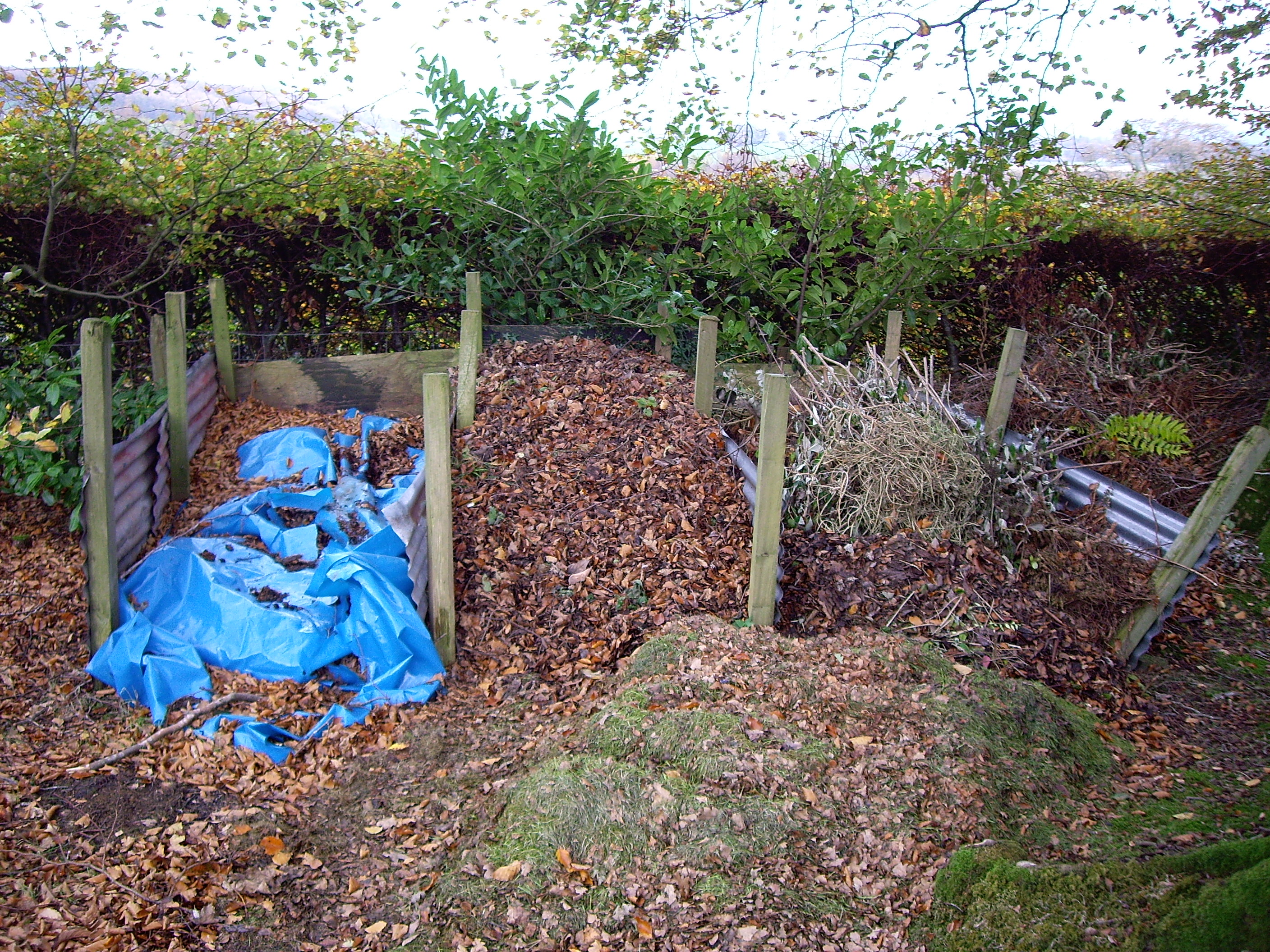Home>Gardening Techniques>DIY Projects>How To Make My Own Greenhouse
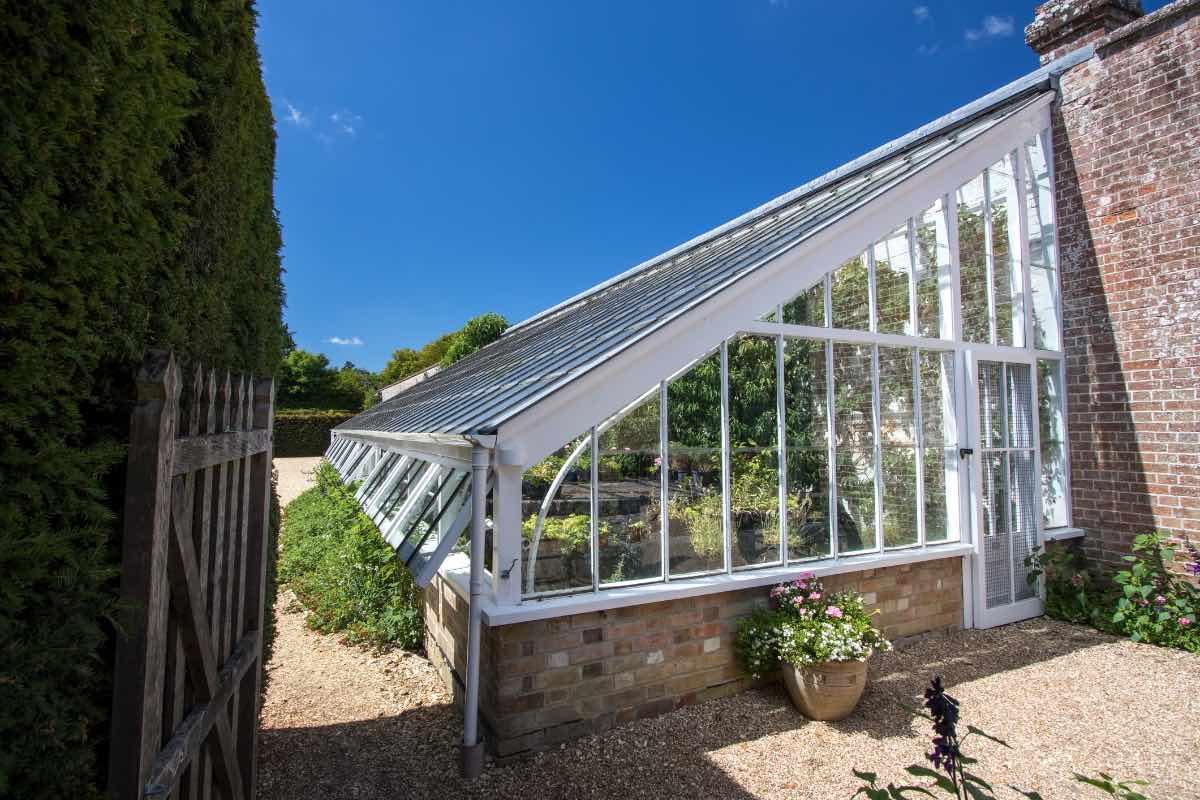

DIY Projects
How To Make My Own Greenhouse
Modified: February 9, 2024
Learn how to make your own greenhouse with these DIY projects. Transform your backyard into a sustainable haven for your plants and vegetables.
(Many of the links in this article redirect to a specific reviewed product. Your purchase of these products through affiliate links helps to generate commission for Chicagolandgardening.com, at no extra cost. Learn more)
Table of Contents
- Introduction
- Benefits of Having a Greenhouse
- Choosing the Right Location
- Selecting the Greenhouse Type
- Gathering Necessary Materials and Tools
- Building the Greenhouse Structure
- Installing Ventilation and Irrigation Systems
- Adding Shelves and Benches
- Selecting and Planting Suitable Greenhouse Plants
- Maintaining the Greenhouse
- Conclusion
Introduction
Welcome to the world of DIY greenhouse projects! Whether you have a green thumb or are just starting your gardening journey, building your own greenhouse can be a rewarding and fulfilling experience. Not only does it offer a controlled environment for plants to thrive, but it also provides countless opportunities for experimentation and creativity.
A greenhouse is a structure designed to cultivate and protect plants, providing optimum conditions for their growth. It works by capturing and retaining heat, creating a microclimate that allows plants to grow even in unfavorable weather conditions. By having your own greenhouse, you can extend the growing season, protect delicate plants from harsh elements, and have a continuous supply of fresh produce throughout the year.
But why should you consider building your own greenhouse instead of buying a pre-built one? The answer lies in the customization and personalization it offers. By constructing your own greenhouse, you have the freedom to design it according to your specific needs and preferences. You can choose the size, materials, and features that best suit your gardening goals. Plus, it can be a cost-effective option compared to purchasing a ready-made greenhouse.
In this comprehensive guide, we’ll walk you through the process of building your own greenhouse from start to finish. From choosing the right location to selecting suitable plants, we’ll cover everything you need to know to create a successful DIY greenhouse project.
Benefits of Having a Greenhouse
Having a greenhouse offers a multitude of benefits for both novice and experienced gardeners. Let’s explore some of the advantages that come with having your own greenhouse:
- Extended Growing Season: One of the primary benefits of a greenhouse is the ability to extend the growing season. By creating a controlled environment, you can start planting earlier in the spring and continue growing well into the fall or even winter. This means you can enjoy fresh produce for a longer period and have a head start on your gardening activities.
- Weather Protection: A greenhouse provides a sheltered space for your plants, protecting them from unpredictable weather conditions such as heavy rain, strong winds, or hail. This is especially beneficial if you live in an area with harsh weather or experience frequent temperature fluctuations. Your plants will have a better chance of thriving in a stable and protected environment.
- Optimum Growing Conditions: With a greenhouse, you have control over the temperature, humidity, and light levels. This allows you to create the ideal conditions for different plants. Whether you want to grow tropical species, delicate flowers, or heat-loving vegetables, you can adjust the climate inside the greenhouse to meet their specific requirements. This precision enables faster growth, higher yields, and healthier plants.
- Protection from Pests and Diseases: Greenhouses act as a barrier against common garden pests and diseases. The confined space makes it easier to monitor and control any infestations or outbreaks. By implementing proper sanitation practices and using natural pest management techniques, you can significantly reduce the risk of plant damage. This means less reliance on chemical pesticides and a healthier garden ecosystem.
- Variety of Plant Options: Greenhouses open up a world of possibilities when it comes to plant selection. You can experiment with different varieties and exotic species that may not be suitable for outdoor growing in your region. From delicate orchids and succulents to exotic fruits and vegetables, a greenhouse expands your options and allows you to explore a wider range of plants.
These are just a few of the many benefits of having your own greenhouse. Whether you’re a hobbyist gardener or aspiring botanist, a greenhouse provides a dedicated space for your plants to flourish and allows you to indulge in your passion for gardening year-round.
Choosing the Right Location
Choosing the right location for your greenhouse is crucial for its success. Here are some key factors to consider when selecting the perfect spot:
- Sunlight Exposure: Greenhouses thrive with ample sunlight, so it’s important to choose a location that receives the most sunlight throughout the day. Ideally, the greenhouse should be oriented towards the south or southeast to maximize sun exposure. Take note of any obstructions such as trees, buildings, or fences that may cast shadows and block sunlight.
- Level Ground: It’s essential to have a level and stable foundation for your greenhouse. Avoid sloping or uneven terrain, as it can cause water drainage issues and instability. If necessary, you may need to level the ground or consider building a raised platform to ensure a solid base for your greenhouse.
- Access to Utilities: Consider the availability of utilities such as water and electricity near the chosen location. Having easy access to water sources will simplify irrigation systems, while electrical connections will be necessary if you plan to install fans, heaters, or other equipment inside the greenhouse.
- Proximity to Water and Storage: It’s practical to choose a location close to a water source for easy watering and maintenance of your plants. Additionally, having nearby storage space for garden tools, potting soil, and other supplies will make it convenient to tend to your greenhouse.
- Weather Conditions: Take into account the prevailing weather conditions in your area. Consider factors such as wind patterns, frost-prone areas, and exposure to extreme weather events. Position your greenhouse in a location that offers some protection from strong winds and extreme weather, or consider building windbreaks or shade structures if necessary.
Remember that the location of your greenhouse can greatly impact its performance and the success of your plants. Spend time observing different areas of your property, considering these factors, and seek advice from seasoned gardeners or local experts if needed. By carefully choosing the right location, you’ll set a strong foundation for your greenhouse project.
Selecting the Greenhouse Type
When it comes to selecting the type of greenhouse for your DIY project, there are several options to consider. Each type offers its own advantages and suits different gardening needs. Here are some popular greenhouse types to help you make an informed decision:
- Lean-to Greenhouses: Lean-to greenhouses are attached to an existing structure such as a house, garage, or shed. They are a great choice if you have limited space or want easy access to utilities. Lean-to greenhouses benefit from the warmth and protection provided by the existing structure, making them more energy-efficient.
- Freestanding Greenhouses: Freestanding greenhouses are standalone structures that offer more flexibility in terms of size, design, and placement. They can be placed anywhere on your property, allowing you to take full advantage of sunlight and space. If you have enough room and want the freedom to customize your greenhouse, a freestanding design might be the right choice.
- Hoop Houses: Hoop houses, also known as polytunnels, are budget-friendly greenhouse options. They feature a curved or arched frame made of hoops covered with a plastic or polyethylene film. Hoop houses are relatively easy to construct and offer excellent protection from the elements. They are a popular choice for seasonal gardening or for those who want a more affordable option.
- Glass Greenhouses: Glass greenhouses are known for their beauty and durability. They provide excellent light transmission, creating an ideal environment for plants. Glass greenhouses can be upgraded with insulation, shading, and ventilation systems to control temperature and humidity. While they can be more expensive, they offer a long-lasting and aesthetically pleasing option.
- Plastic/Greenhouse Film Greenhouses: Greenhouse film or plastic-covered structures are cost-effective and easy to assemble. They provide good light transmission and can be customized to suit different sizes and shapes. However, they may need to be replaced periodically depending on the quality of the film and exposure to environmental factors such as UV rays and extreme weather conditions.
Consider factors such as your budget, available space, climate, and long-term goals when selecting the type of greenhouse. It’s also important to evaluate the materials and glazing options for each type, as they can affect the overall performance and energy efficiency of the greenhouse. Research and consult with experienced gardeners or professionals to find the greenhouse type that best fits your specific needs and preferences.
Gathering Necessary Materials and Tools
Before you embark on building your greenhouse, it’s essential to gather all the necessary materials and tools. Here’s a list of items you’ll likely need:
- Frame Materials: The frame of your greenhouse can be made from materials such as wood, PVC pipes, metal, or aluminum. Choose a material that suits your budget, desired aesthetics, and durability requirements.
- Glazing Material: Depending on the type of greenhouse you choose, you’ll need the appropriate glazing material. Options include glass panels, polycarbonate sheets, or greenhouse film. Consider factors such as light transmission, insulation properties, and cost when selecting the glazing material.
- Fasteners: You’ll need fasteners such as screws, nails, bolts, and brackets to assemble the greenhouse frame. Make sure to choose weather-resistant fasteners that are suitable for the materials you’re working with.
- Foundation Materials: The foundation provides stability and support for your greenhouse. Materials such as concrete, gravel, or pressure-treated lumber can be used for the foundation. Check local building codes and regulations to ensure compliance.
- Doors and Vents: Consider the type and number of doors you’ll need for access to your greenhouse. Additionally, ventilation is crucial for maintaining the optimal climate inside the greenhouse. Plan for windows, louvers, or automatic vents to ensure proper airflow.
- Irrigation System: Depending on the size and complexity of your greenhouse, you may want to install an irrigation system for efficient watering. This can include drip irrigation, soaker hoses, or a misting system to deliver water directly to the plants’ roots.
- Shelving and Benches: Shelving and benches are essential for organizing your plants and maximizing space inside the greenhouse. Consider sturdy materials such as wood or metal, and plan for adequate shelving or bench space based on your gardening needs.
- Basic Tools: Ensure you have a set of essential tools such as a hammer, drill, saw, level, tape measure, and screwdrivers. These tools will be necessary throughout the construction process.
Take time to research and make a detailed list of all the materials and tools you’ll need before starting your greenhouse project. This will help you stay organized and ensure that you have everything on hand when you begin construction. It’s also a good idea to consult with experienced DIYers or experts to get recommendations on specific materials and tools that work best in your particular region or climate.
Building the Greenhouse Structure
The process of building the greenhouse structure is where your DIY skills truly come into play. Follow these steps to construct the framework of your greenhouse:
- Prepare the foundation: If your greenhouse requires a foundation, start by preparing the area according to the chosen material. This may involve leveling the ground, pouring concrete, or setting up a raised platform. Ensure that the foundation is sturdy and properly aligned.
- Assemble the frame: Follow the manufacturer’s instructions or your own design plan to assemble the greenhouse frame. This may involve cutting and fitting the frame materials, such as wood or PVC pipes, to create the desired shape and size. Use the appropriate fasteners to secure the frame together.
- Install the glazing: Once the frame is constructed, it’s time to install the glazing material. Carefully position and secure the glass panels, polycarbonate sheets, or greenhouse film onto the framework. Take care to ensure a snug fit, weatherproof seals, and proper insulation if necessary.
- Add doors and vents: Install doors for easy access to the greenhouse, ensuring they are properly aligned and operate smoothly. Install windows, louvers, or automatic vents to provide ventilation and regulate temperature and humidity inside the greenhouse.
- Secure the structure: Make sure the greenhouse structure is securely anchored to the foundation or the ground. This is particularly important if you live in an area prone to strong winds. Use appropriate anchoring systems such as ground stakes, concrete anchors, or metal brackets to enhance stability.
- Test and make adjustments: Once the structure is complete, test all doors, vents, and any other moving parts to ensure they function correctly. Make any necessary adjustments to ensure everything operates smoothly and seals tightly to prevent drafts or leaks.
Remember to pay attention to proper safety precautions throughout the construction process. Use protective gear such as gloves and goggles, and work with caution, especially when handling sharp tools or working at heights. If needed, seek assistance or guidance from experienced builders or consult building codes and regulations specific to your area.
Building the structure of your greenhouse is an exciting milestone in your DIY project. Once completed, you’ll have a solid foundation to move forward with the installation of essential greenhouse systems and accessories.
Installing Ventilation and Irrigation Systems
Proper ventilation and irrigation are crucial for maintaining a healthy and thriving greenhouse environment. Here are the steps to install ventilation and irrigation systems:
- Ventilation: Good airflow helps control temperature, humidity, and prevents the buildup of moisture inside the greenhouse. Install windows, vents, or louvers strategically to allow hot air to escape and fresh air to enter. Consider automatic vent openers that respond to temperature changes for added convenience.
- Fans: For additional air circulation, especially during hot and stagnant periods, consider installing fans. Circulating air over the plants helps prevent diseases and improves overall plant growth. Place fans strategically to achieve optimal airflow, ensuring they are safely secured and protected from any water splashes.
- Irrigation: Depending on the size of your greenhouse and the plants you intend to grow, choose an appropriate irrigation system. Options include drip irrigation, which delivers water slowly and directly to the plant’s root zone, or misting systems that create a fine spray to maintain humidity. Set up the irrigation system according to the manufacturer’s instructions or seek professional advice.
- Water Source: Ensure you have a reliable and easily accessible water source for your greenhouse. Connect the irrigation system to a water supply or install a rainwater collection system to make your greenhouse more sustainable. Consider using water filters and timers to automate watering routines and conserve water.
- Drainage: Proper drainage is essential to prevent waterlogging and enable excess water to escape. Ensure adequate drainage systems or use gravel or perlite as a growing medium to improve drainage. Regularly monitor the moisture levels in the greenhouse to prevent overwatering or water stagnation.
Each greenhouse is unique, so tailor the ventilation and irrigation systems to meet the specific needs of your plants, climate, and growth stages. Monitor the temperature and humidity levels regularly to make any necessary adjustments to the systems. It’s also helpful to observe the behavior of your plants and consult gardening resources to determine the ideal conditions for their growth.
By installing efficient ventilation and irrigation systems, you will create a healthier and more balanced environment for your plants, ensuring their optimal growth and productivity inside the greenhouse.
Adding Shelves and Benches
One important aspect of maximizing space and organization in your greenhouse is the addition of shelves and benches. These structures provide surfaces for displaying and arranging your plants and gardening supplies. Here’s how to add shelves and benches to your greenhouse:
- Assess your needs: Take into account the types of plants you’ll be growing and the amount of space you have available. Consider whether you need shelves, benches, or a combination of both. Determine the height and width requirements based on the size of your plants and the available space in your greenhouse.
- Select suitable materials: Choose materials that are durable, resistant to moisture, and easy to clean. Common options include wood, metal, or plastic. Cedar and pressure-treated lumber are popular choices for their resistance to rot and insects. Ensure the materials you select are strong enough to support the weight of your plants.
- Design and layout: Plan the layout of your shelves and benches, considering the flow of movement and accessibility. Optimize space by utilizing vertical shelving or incorporating tiered designs. Factor in the height of your plants and make sure there’s enough space between shelves for adequate light penetration and airflow.
- Build or purchase: Depending on your DIY skills and preference, you can either build the shelves and benches yourself or purchase pre-made options. If building, follow a set of plans or design your own based on your specific requirements. Ensure proper measurements, sturdy construction, and secure fastening.
- Installation: Install the shelves and benches securely to the walls or framework of your greenhouse. Use appropriate hardware such as brackets, screws, or hooks to ensure stability. Consider using adjustable shelving systems that allow you to modify the height and configuration as needed.
- Organize and arrange: Once the shelves and benches are installed, organize your plants and gardening supplies in an efficient and visually pleasing manner. Group plants based on their light and watering requirements. Arrange tools, pots, and other accessories for easy access. Consider labeling shelves or using plant markers for simple identification.
Remember to regularly clean and maintain your shelves and benches to prevent the buildup of dirt, pests, or disease. Avoid overcrowding the shelves to allow for proper airflow and ensure the health and vitality of your plants.
By adding shelves and benches to your greenhouse, you’ll optimize the use of space, create a visually appealing display of your plants, and facilitate efficient gardening practices.
Selecting and Planting Suitable Greenhouse Plants
Choosing the right plants for your greenhouse is essential for successful cultivation. Here are some tips for selecting and planting suitable greenhouse plants:
- Consider climate and environment: Take into account the specific climate conditions inside your greenhouse, such as temperature, humidity, and light levels. Different plants have varying tolerance levels, so choose plants that will thrive in the conditions you can provide.
- Know your purpose: Determine the purpose of your greenhouse. Are you looking to grow vegetables, flowers, or a mix of both? Understanding your goals will help you choose the right types of plants and create a cohesive and visually appealing greenhouse space.
- Research plant requirements: Each plant has specific requirements for light, temperature, water, and nutrients. Research the specific needs of the plants you’re interested in growing. Some plants may require supplemental lighting or heating systems to create the ideal conditions for growth.
- Consider the growth habit: Take into account the growth habit of each plant. Some plants may require trellises or supports for climbing or vertical growth, while others may need space to spread out. Plan your layout accordingly to accommodate the various growth habits of the plants you select.
- Choose disease-resistant varieties: Greenhouses can be susceptible to certain pests and diseases due to the enclosed environment. To minimize the risk, choose plants that have resistance to common greenhouse pests and diseases. This will help ensure healthier and more robust plants.
- Start from seeds or transplants: Decide whether you want to start your plants from seeds or purchase transplants. Starting from seeds offers a wider variety of plant options and can be more cost-effective, but it requires more time and effort. Transplants give you a head start and are convenient if you’re eager to see results sooner.
- Plan for crop rotation: If you plan on growing edible crops in your greenhouse, consider implementing a crop rotation system. This helps prevent nutrient depletion and reduces the risk of disease buildup in the soil. Plan your plantings and rotations to optimize fertility and minimize plant stress.
- Regularly monitor and maintain: Once your plants are in the greenhouse, diligently monitor their progress. Check for signs of pests or diseases, adjust watering and fertilizing schedules as needed, and prune or trellis plants to guide their growth. Regular maintenance and care will ensure healthy and bountiful harvests.
Remember to choose plants that you enjoy growing and have a passion for nurturing. Creating a thriving and abundant greenhouse is not only about the end results but also about the joy and fulfillment it brings. Happy planting!
Maintaining the Greenhouse
Maintaining your greenhouse is crucial for the ongoing health and productivity of your plants. Here are some key maintenance tasks to keep your greenhouse running smoothly:
- Cleaning: Regularly clean your greenhouse to remove dirt, debris, and algae buildup. This includes sweeping the floors, wiping down surfaces, and cleaning the glazing material. Proper hygiene and sanitation help prevent diseases and pests from taking hold.
- Monitoring temperature and humidity: Continuously monitor the temperature and humidity levels inside your greenhouse. Invest in a thermometer and hygrometer to keep track of these parameters. Adjust your ventilation and heating systems as needed to maintain optimal conditions for your plants.
- Watering and fertilizing: Develop a watering and fertilizing schedule based on the needs of your plants. Be mindful not to overwater, as this can lead to root rot and fungal growth. Regularly check the moisture levels of the soil and apply appropriate fertilizers to ensure healthy growth and nutrient uptake.
- Pest and disease control: Actively monitor your plants for any signs of pests or diseases. Inspect regularly for aphids, mites, fungi, or other common greenhouse pests. Implement integrated pest management techniques such as using natural predators, sticky traps, or organic pest control methods to prevent and address infestations.
- Pruning and training: Regularly prune and train your plants to encourage proper growth and shape. Remove dead or damaged foliage, and trim back overgrown branches to improve airflow and light penetration. Additionally, provide support or trellises for climbing plants to guide their growth and prevent overcrowding.
- Inspecting and repairing: Routinely inspect your greenhouse for any signs of damage or wear and tear. Check for leaks, loose connections, or broken glazing. Promptly repair any issues to maintain the integrity of the structure and prevent further damage.
- Seasonal adjustments: As the seasons change, make necessary adjustments to your greenhouse. This may include adding shade cloth during hot summers, insulating during cold winters, or adjusting ventilation and heating systems accordingly. Adapt to the changing needs of your plants and the external environment.
- Record keeping: Keep a record of your greenhouse activities, including planting dates, crop rotations, pest sightings, and successes and failures. This valuable information will help you improve your future greenhouse endeavors and track the progress and performance of your plants.
Maintaining your greenhouse requires consistent attention and care. Regularly dedicating time to these tasks will go a long way in creating an optimal growing environment for your plants and ensuring long-term success in your greenhouse endeavors.
Conclusion
Congratulations on completing this comprehensive guide on DIY greenhouse projects! Building your own greenhouse is a rewarding endeavor that offers numerous benefits for gardening enthusiasts and plant lovers alike. By following the steps outlined in this guide, you have gained valuable knowledge on creating a successful greenhouse project.
We began by highlighting the benefits of having a greenhouse, including the ability to extend the growing season, protect plants from harsh weather conditions, and customize the environment for optimal growth. We then discussed the importance of choosing the right location, selecting the greenhouse type that suits your needs, and gathering the necessary materials and tools.
From there, we explored the process of building the greenhouse structure, installing ventilation and irrigation systems, and adding shelves and benches for efficient use of space. We also covered the crucial steps of selecting suitable plants for your greenhouse and maintaining it for long-term success. Regular cleaning, monitoring temperature and humidity, proper watering and fertilizing, pest and disease control, pruning and training, and seasonal adjustments are all essential aspects of greenhouse maintenance.
Remember to continue learning and adapting as you gain experience in your greenhouse journey. Seek information from fellow gardeners, take note of lessons learned, and stay curious about new techniques and plant varieties.
Your greenhouse will be a sanctuary where you can grow a wide array of plants, experiment, and find solace in the beauty of nature. Whether you’re growing vegetables, flowers, or a mixture of both, your greenhouse will provide you with joy, wonder, and a bountiful harvest.
Embrace the possibilities that a greenhouse brings, and may your gardening adventures in your DIY greenhouse project be fruitful and fulfilling!
